Usefull Information
Some insights into billiard equipment
Tips on tips
When discussing pool cue tips there are two universal mathematical formulas I follow:
$1000 cue stick + a 10¢ tip = a 10¢ cue stick
$1000 cue stick + a $80 tip + a 10¢ player = a 10¢ game!
What this means, is if you are not a serious player, don’t worry about the stick. If you are playing for fun, you don’t need the best equipment available. A well-practiced player with a cheap stick will always beat a novice with an expensive one. If you only play once in a while, there is no equipment you can buy that will drastically improve your game. If you are among the 25% of all pool players that take the game seriously, then choosing the proper tip can improve your game and consistency.
The average local tournament player will spend between $300 and $1,100 for a cue. The only parts of the cue that will help him win are the last 12 inches of the shaft and the tip. Approximately 85% of the cost of the cue is in the decorations, like fancy inlays, special materials and handle wraps. If your game is at a level where you want to look good and play well, then the investment is justified. If not, buy a decent cue and spend your money on table time or better yet, invest it in a table of your own.
You can have a perfectly balanced cue, straight as an arrow with a solid wood joint, but if you have the wrong tip, it negates all these benefits. The sole purpose of the tip is to transmit energy from the cue stick to the cue ball without slipping off. If you have a good solid cue with a soft tip, the energy is absorbed into the tip. If you have a flimsy cue with a hard tip, it will flex and slip off the cue ball.
Tips are categorized by hardness, and other things like construction type and material.
One thing should be made clear, all tips end up being Hard tips. Even if they start out Soft, the repeated hammering against the cue ball will compress and harden it over time. If you want to play with a Soft tip consistently, you will have to replace it often. This is why most pros prefer a hard tip: it starts hard and stays near the same hardness longer.
Some distributors will market their tips with hardness ratings ranging from 60 to 100. The ratings are usually as follows; 60-65= soft, 66-75= medium, 76-80= medium hard, 81-85= hard and over 85= very hard.
Moori, an expensive tip, rates theirs as slow, medium and fast.
So what kind of tip should you choose? It depends on your type of game. What follows are some pro’s and con’s of soft and hard tips. Tips in between are a compromise of each set of characteristics.
Soft Tips
Pros;
More tolerant of not chalking on every. The chalk sticks to the larger tip contact area on the cue ball because the tip is compressed on contact.
Works better on cheaper cues because it counteracts shaft deflection.
Generally, stays on longer because glue soaks into the tip.
Usually, less expensive.
Cons;
Wears out quickly.
Break shots will flatten it out quickly.
Consistency changes due to tip compression and wear.
Gives a cushioned feel to the stick.
Hard Tips
Pros;
Wears out slowly.
Can be used for break shots.
Consistency is maintained over life of the tip.
Gives a true feel of the stick.
Cons;
Needs to be chalked every shot.
Small tip contact area can cause miscues for novice players.
If not properly installed, can fall off due to being less porous for glue adhesion.
Usually more expensive.
Below is some information about the four tips I commonly install along with a picture of an actual tip for comparison. I found these ratings on line somewhere. I don't know what tool they use to measure them, so they are just for reference.
Specialty tips and recommendations are available upon request.
Elk Master Cue Tip:
Recognized as a Soft tip
Hardness Rating: 60.1
Material: Mineral tanned cow leather
Characteristics: Identified by it’s distinctive blue color

Triumph Cue Tip:
Recognized as a Medium tip
Hardness Rating: 74
Material: Vegetable tanned cowhide leather
Characteristics: Oak colored with a red fiber backing is for gluing consistency
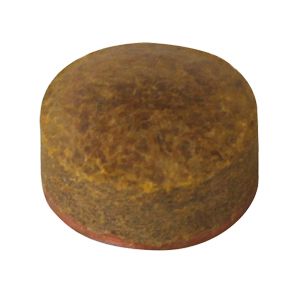
Le Pro Tip:
Considered a Hard tip
Hardness rating: 81.2
Material: Vegetable tanned cowhide leather
Characteristics: Dark brown, solid leather
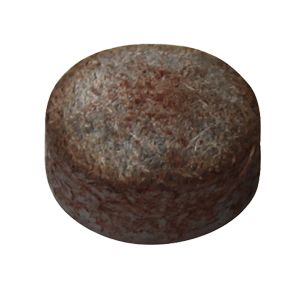
Water Buffalo Tip:
Considered an Extra Hard Tip
Hardness rating: 86.1
Material: Pure Water Buffalo hide
Characteristics: Solid leather, dark black in color
![]()
Facts on ferrules
Probably the most misunderstood part of a pool cue is the ferrule, the white thing under the tip. A ferrule is anything that keeps something from spreading apart, the plastic thing at the end of a shoe lace is a ferulle, its technicaly called the aglet. A pool cue ferrule is there to keep the wooden cue shaft from mushrooming on the end. Here's a picture of what happens without a ferrule or tip. Most of us grew up playing with sticks like this, and still had fun!
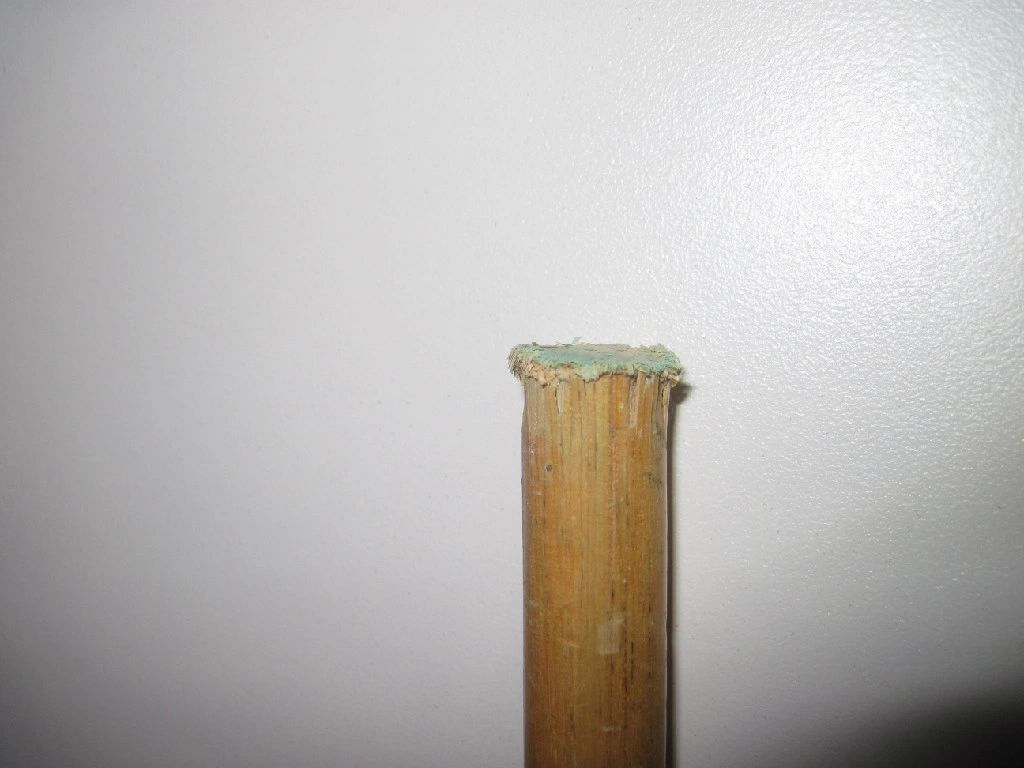
Ferrules are made from an unending list of materials. The originals were from real ivory. Trade bans have reduce the supply of this so it became very expensive and fell out of favor. A bunch of man made materials are available and for the average player, we won't notice the difference. Below are a few of them.
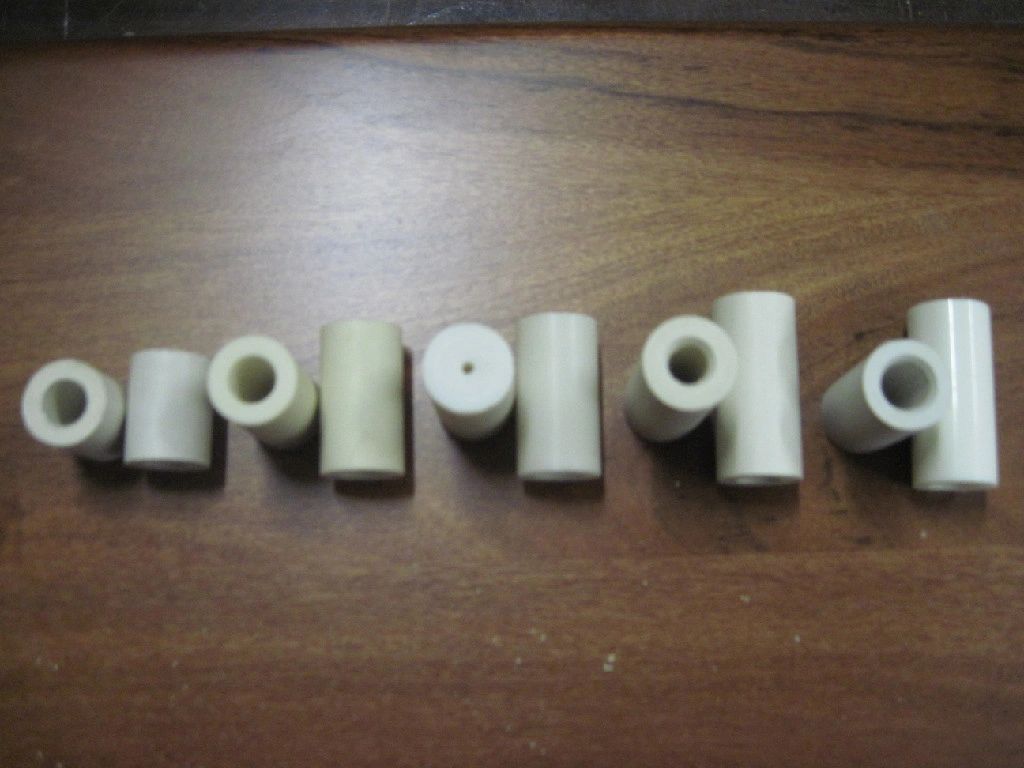
The most commonly used ferrule is a tube which lets the tip ride directly on the shaft so the feel on most shots would go straight from the tip to the wooden shaft. Here is an example of this type of construction on a cue shaft sliced in half.
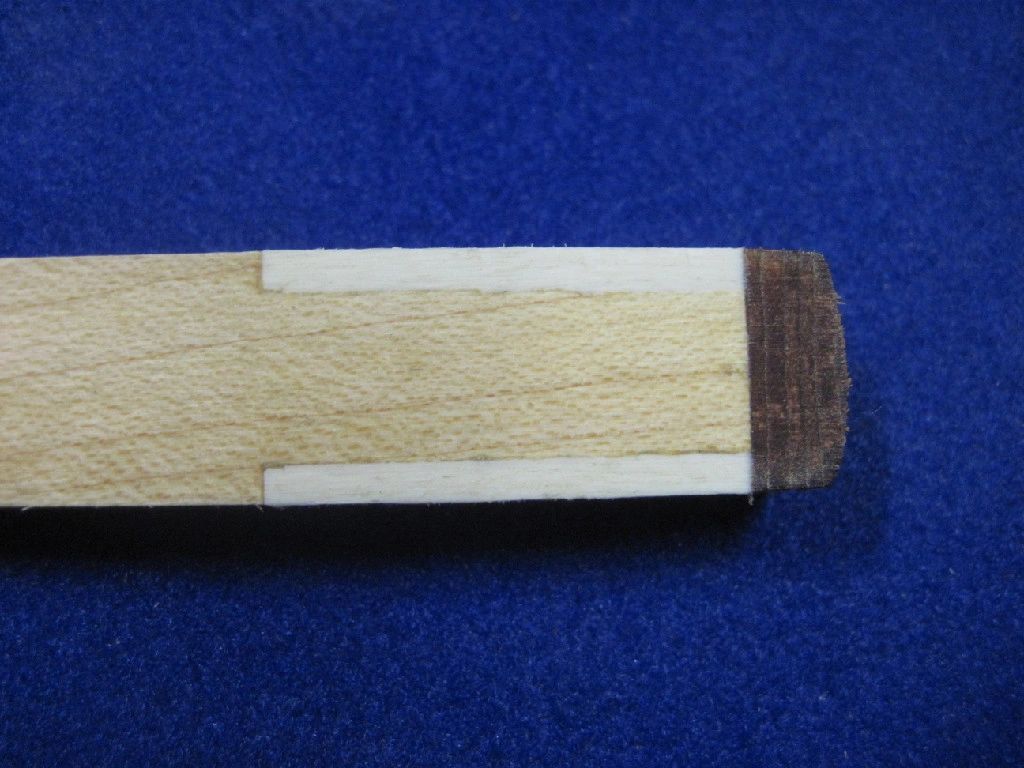
Another type of ferrule is called a threaded and capped ferrule. This picture shows this construction and how it creates a barrier between the tip and the shaft. There are some concerns when installing this type because a gap can be created between the shaft and the ferrule which may not give an accurate feel to the cue. Normally this gap would be full of glue, I left it empty and exagerated it in this picture to make it obvious. It takes precise measuring to minimize the gap and amount of glue.
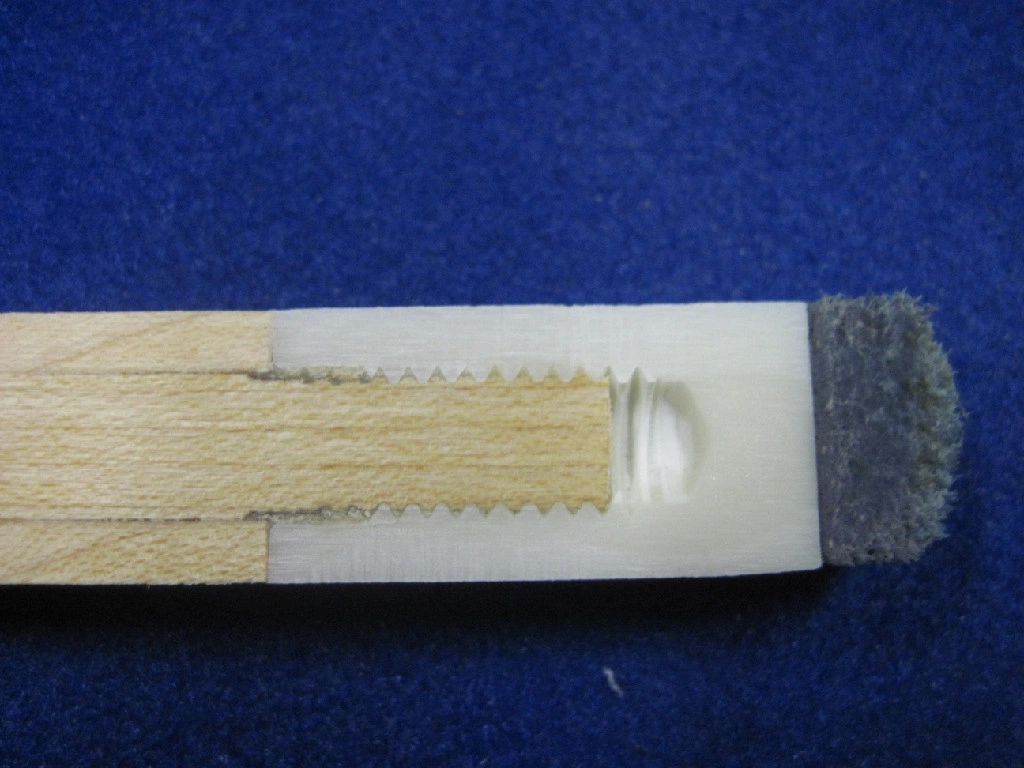
Clues on cloth
The second most misunderstood part of a pool table is the cloth, and for good reason. First the basics; pool table cloth is not felt. It is a combination of two materials, wool and nylon. The wool is for the durability and the nylon is for the stretchiness. It varies but usually is about 80% wool and 20% nylon.
There are two basic kinds of wool used, worsted and unworsted. The essential feature of a worsted wool is straightness of fiber, in that the fibers lie parallel to each other. To us we tell the difference by the fuzzyness. The most common cloth uses unworsted wool and feels thicker and has a fuzzyness to it. Worsted cloth, like Simonis, feels very smooth and won't create the little fuzzy clumps you will see appear on most tables. Worsted wool starts out playing fast and stays near the same speed over it's life. Unworsted starts out slower and speeds up as the cloth wears out. Most all professional tournaments are played on worsted cloth. Of course worsted cloth cost about double what standard cloth does.
Cloth is usually sold by weight, measured in ounces per square yard. The accepted process in measuring the weight of any cloth is you use a special die to cut out the same size piece of cloth every time, weigh it and do the math to convert to yard weight. No way is a pool table cloth company going to cut a piece out of every yard to find the weight. What I believe they do is run off a roll of cloth called a bolt, which contains 35 yards, weigh the bolt and divide by 35 to get an average weight per square yard. What this means is the cloth you get may not weigh exactly what is on the package. But here is the good news, it probably doesn't matter. Both players are playing on the same cloth so neither has an advantage, unless they are used to a particular cloth which means they need to work on their game. More on this topic in the next section "The tale of the table". Bottom line is the heavier cloth is supposed to last longer because it is more dense. Except in pool halls, it's been my experience that pool table cloth gets damaged long before it wears out. I do recommend worsted cloth if you can afford it, it is easier to keep clean and it gives your opponent one less thing to blame his poor shooting on!
The tale of the table.
The price of the table is not as important as the proper assembly of the table!
Once you get above a certain price level of a table, in my opinion around $2000, the quality of play you will get out of the table doesn't improve much. The reason for this is that the basic materials, the slate, the rubber cushions and the cloth are supplied by relatively few companies, so most manufacturers use the same basic parts. The slate comes from basically 3 different places, Italy, Brazil and China. The reason for this is pool table slate requires a very low moisture content and supposedly these countries have the lowest. Cushions, banks, rails or bumpers are made of rubber and can vary in density and recoil from brand to brand, some say the best comes from England. Once the cloth is applied, the average player will never know what kind of rubber cushion is underneath. The cloth we have already covered in detail.
Final 2 cents
Now to address something I alluded to in a previous section. If you are taking the game of pool seriously enough to worry about the equipment more than your skills, you are at the point where you should reverse these priorities. A large part of any game where you slide or roll something across a surface, is learning the surface and adapting your game. Golf, bowling, curling, shuffle board etc. All the best players got there because they could read the subtleties of the equipment and adjust quicker than their opponent. Pool tables are like snow flakes, no two are the same. A good pool player's worst enemy is a good pool table, it takes away one of his greatest advantages, adaptability.
Much of the information on this page is based on the opinions and experience of the composer. Your results. opinions and experience may differ and I welcome your feedback.
E-MAIL tablesandcues@comcast.net